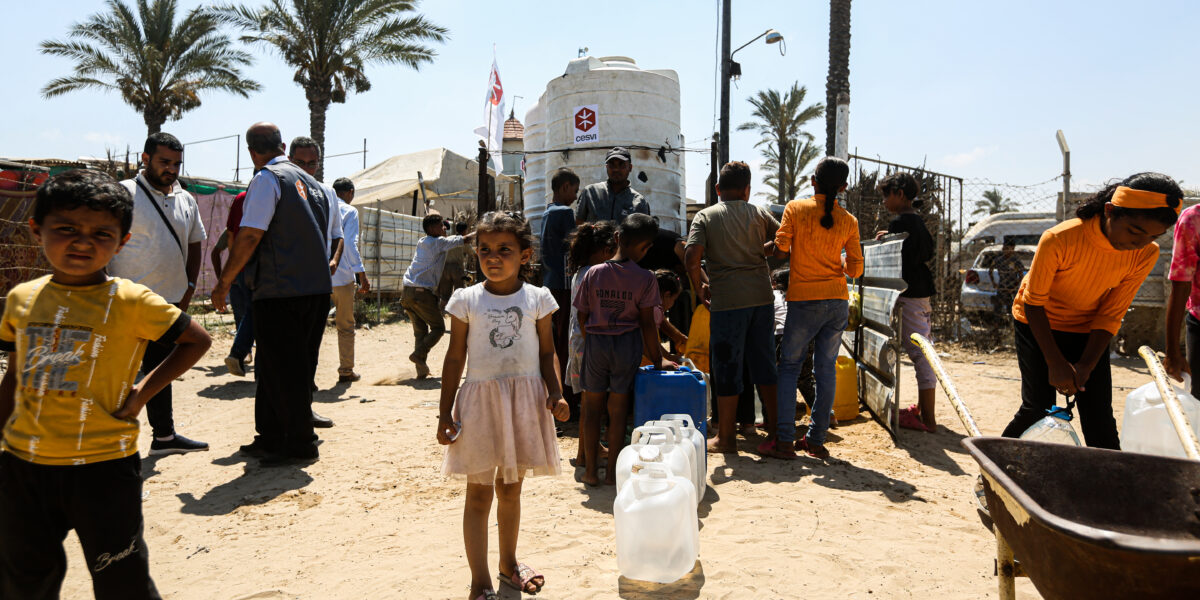In Gaza, there are no longer any safe places. Civilians are being killed, and those who survive face severe conditions due to hunger and thirst. Delivering aid is becoming increasingly challenging.
Currently, four out of five families in the Gaza Strip lack access to clean drinking water. Ninety-six per cent of the population is experiencing hunger, and 90% of children under five suffer from waterborne illnesses. The onset of winter raises concerns over flooding in displacement camps, further worsening an already dire situation.
This is an unprecedented emergency, with no regard for civilians who are systematically targeted. Living conditions are intolerable: food, water, and essential supplies are nearly impossible to find, and dire sanitary conditions are causing deadly infections, particularly among children. Furthermore, bringing much-needed aid to the population is almost impossible: only a few dozen humanitarian workers are allowed entry each week, while 2.15 million people are on the brink of survival.
Over the past year, conditions in Gaza have rapidly deteriorated. Four out of five families are currently without access to potable water, 96% of the population faces hunger, and 90% of children under five are afflicted with illnesses caused by contaminated water.
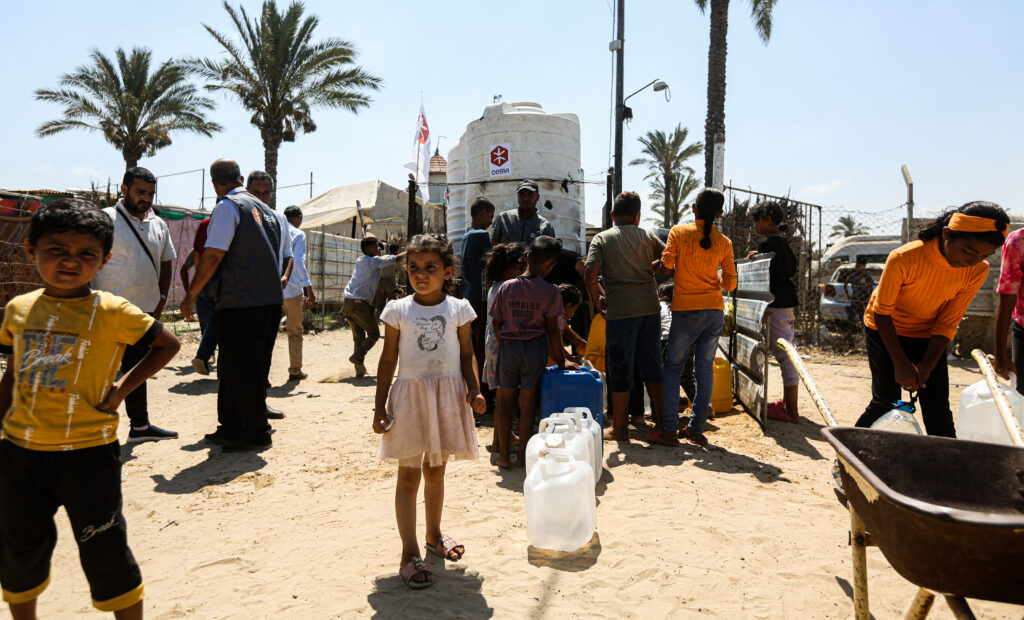
Water and Sanitation: A Crisis Set to Worsen
One of the most critical emergencies is the lack of safe, clean drinking water. Summer evacuation orders caused the loss of access to 15 of the 18 underground water wells in Deir al-Balah, slashing water production in the area by 75%. Currently, only 30% of Gaza’s potential water capacity is being met, leaving hundreds of thousands without access to clean water.
Families are forced to drink contaminated water, leading to severe health consequences. Ninety per cent of children under five suffer from diarrhoeal diseases or other waterborne illnesses. This is compounded by the lack of hygiene items and the exorbitant prices of those available: in July, the price of soap rose by 1,177%. The absence of affordable hygiene products, combined with limited access to clean water and sanitation facilities, poses an escalating and critical health risk.
Despite these extreme challenges, CESVI managed to distribute 50,000 litres of potable water daily throughout the summer to various displacement camps in Gaza City, North Gaza, Khan Younis, and Deir el-Balah, reaching around 129,000 people.
CESVI also equipped seven camps in Khan Younis and Deir el-Balah with 1,500-litre water tanks to store additional potable water for the community.
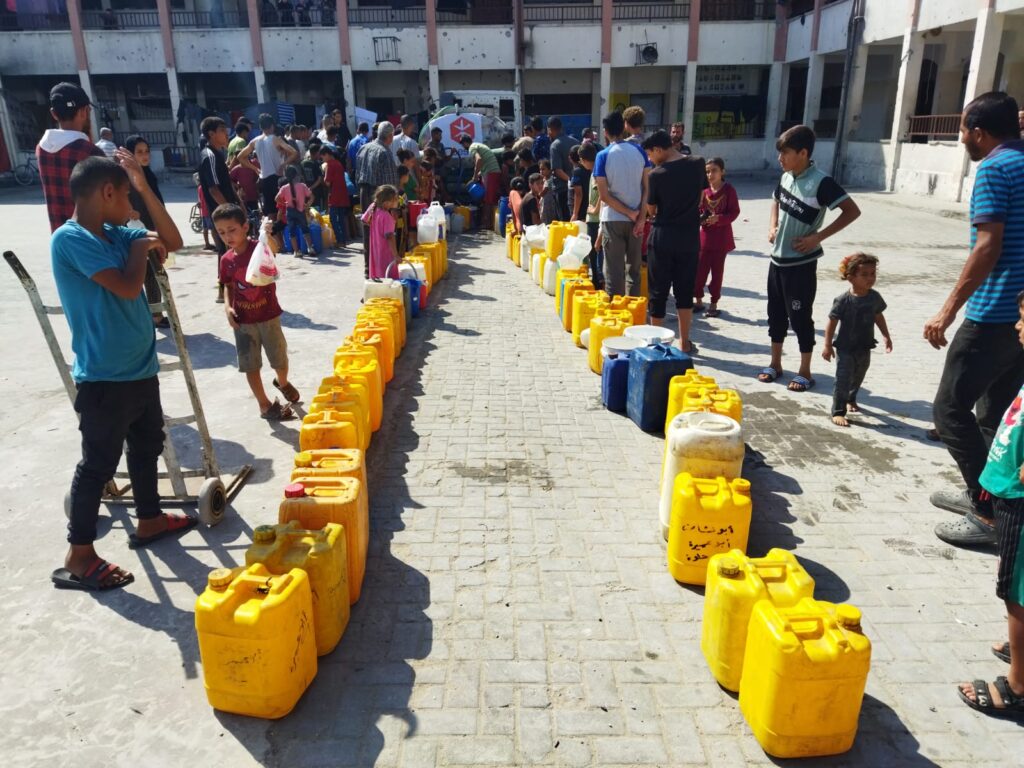
The onset of winter threatens to worsen the situation. Roads, already heavily damaged by bombing and fighting, make the transport of aid extremely difficult. This will only deteriorate in the coming months: most roads are expected to become virtually unusable with the arrival of rains and flooding, which are anticipated in many parts of the Strip due to damage to the sewage system.
Forty-seven per cent of health service points are located in areas at risk of flooding, and many of the 215 temporary learning spaces, hosting approximately 34,000 children, are likely to become unusable and hazardous. Stagnant water will further heighten the risk of infections, including mosquito-borne diseases and contamination between the already scarce potable water supply and wastewater.
In the coming months, CESVI, with support from Welthungerhilfe and the German Federal Foreign Office (GFFO), will expand its intervention to reach an additional 35,000 people, including at least 16,000 children. The organisation will provide clean water and work to improve sanitation facilities in shelters, including repairs, the construction of emergency latrines, and the establishment of continuous maintenance protocols. Hygiene kits will also be distributed, prioritising families involved in nutrition programmes and displaced households, aiming to assist at least 2,520 individuals through this intervention.

An Unprecedented Food Crisis
In addition to the water crisis, Gaza is facing the most severe food crisis recorded in the history of the Global Report on Food Crises. Approximately 96% of Gaza’s population, equivalent to 2.15 million people, is experiencing high levels of acute food insecurity. More than 495,000 people (22% of the population) are in catastrophic food insecurity, suffering from extreme hunger. A total of 745,000 people (33% of the population) are in the emergency phase, facing immense challenges in accessing food.
According to UN estimates, at least 50,000 children in Gaza currently require treatment due to hunger.
Those without access to humanitarian aid survive on fewer than 250 kcal per day, equivalent to just 4–5 biscuits. Thanks to its continuous on-ground presence, CESVI swiftly provided life-saving food to the population. Over recent months, the organisation distributed 18 tonnes of Plumpy’Nut, a therapeutic food for acute malnutrition, reaching between 2,000 and 4,000 children.
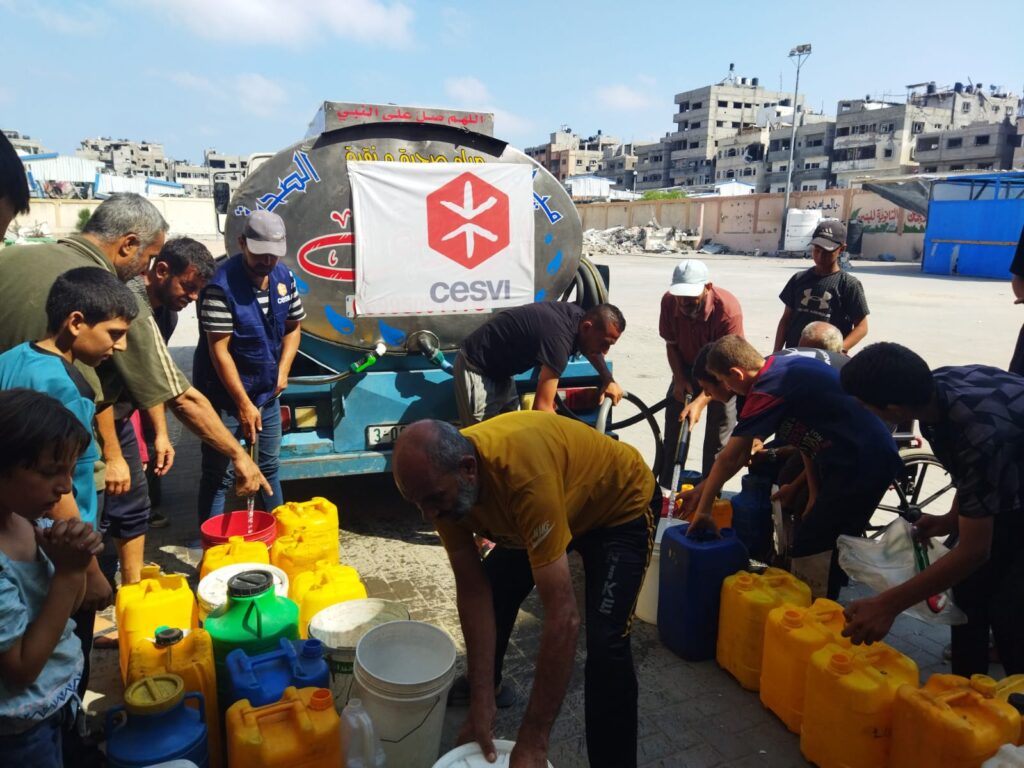
In July alone, 995 food parcels were delivered to displaced families in northern Gaza, reaching around 5,970 people in Gaza City and the northern governorate. The goal is to provide families with food parcels ensuring a daily intake of at least 2,100 kcal, prioritising children, pregnant women, the elderly, and the sick.
Enormous Challenges for Humanitarian Workers
In the face of this unprecedented emergency, humanitarian organisations face increasing difficulties in accessing the Gaza Strip. Since last summer, restrictions on humanitarian access have sharply increased. Blocked missions nearly doubled, rising from 53 in July to 105 in August, with an average of only 69 humanitarian trucks entering the Strip—a stark contrast to the 500 trucks recorded in 2023.
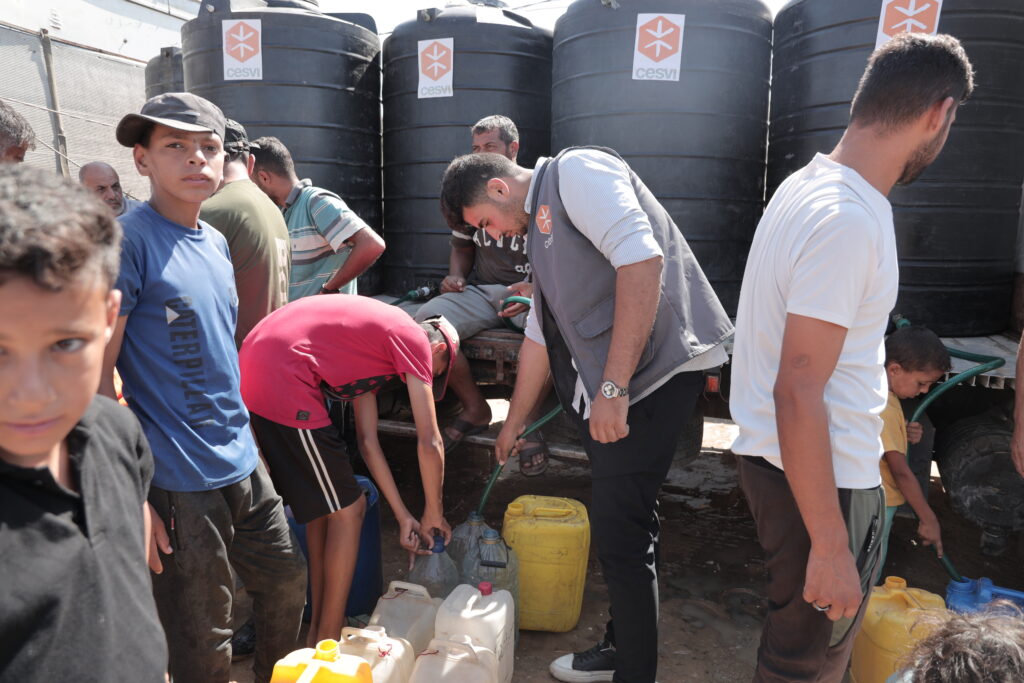
In southern Gaza, despite an increase in planned missions, the number of authorised missions has decreased by 28%. Aid trucks are often held at entry points for days, sometimes weeks. These delays and obstacles have a devastating impact on 1.9 million displaced people in Gaza, with 83% of the food needed for the population unable to reach the Strip.

